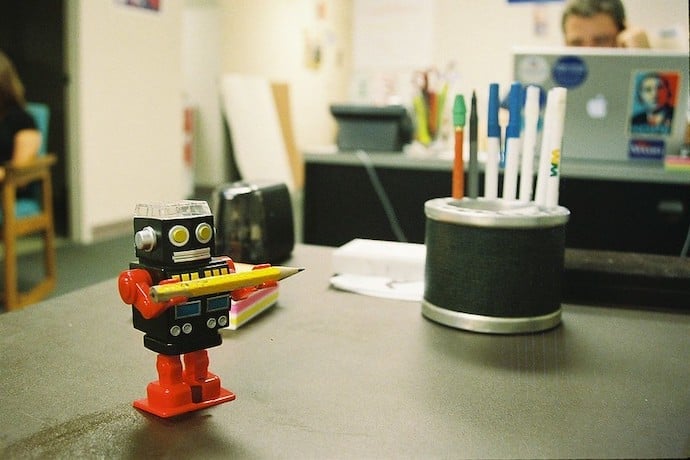With ChatGPT and other types of artificial intelligence in the news so much lately, I think it is worth taking a step back and learning about one of the first ‘electronic people’ ever made, Shakey the robot.
Shakey was created in the 1960s by a small team of researchers at the Stanford Research Institute. This odd-looking, two-meter tall collection of sensors, antenna, and wires mounted on top of a set of wheels with a movie camera for eyes shook so much when it moved around, researchers had no choice but to name it, what else, but Shakey.

Independent Thinker
People had built machines with sensors and cameras before but Shakey was the very first robot to be able to use these tools to think for itself and make decisions on its own. Shakey was able to understand 100 English words and interpret their meaning. This meant that not only could it understand the instructions that were given to it, but Shakey could also decide the best way of completing its task. This was a huge milestone in the field of robotics because it showed that robots could be more than just machines that followed simple instructions.
One of the most impressive things about Shakey, though, was its ability to plan its actions. This meant that it could think ahead and figure out the best way to accomplish a task. For example, if Shakey was told to push a specific box off of a raised platform, it would use its video camera to find the box, and then decide, based on its surroundings, the best way of getting to it and pushing it.
Shakey creators took the lessons learned from their model and kept on creating. Soon Shakey had a new friend named Flakey, a research robot who could use fuzzy logic (a type of non-boolean computer logic) and work towards goals. Soon after that, the Centibots were made.
Shakey’s Legacy
Using the lessons learned from their older siblings, they became some of the earliest swarm robots. The technology that came together to make Shakey can be seen all around us in the modern world. The natural language processing technology we use today like Siri or Alexa can trace its origins back to the original 100 words Shakey was taught.
NASA’s Mars Rover can trace the way it navigates along the red planet’s rocky and dangerous surface back to Shakey pushing boxes around in the research lab. Speaking of getting around, even the navigation systems we use every day, like Google Maps, can trace its roots (or wires) back to this old trembling robot. Shakey was truly a milestone for robotics and artificial intelligence, and as these technologies continue to become more and more advanced, they will always have a little bit of “shake”, rattle, and roll in them.

